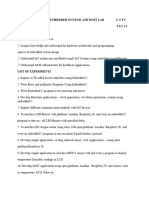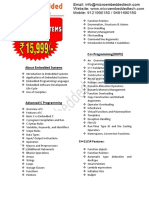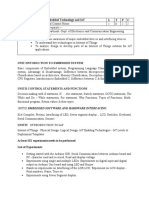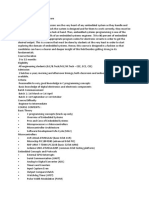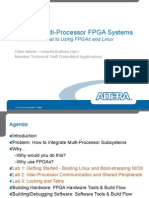0% found this document useful (0 votes)
8 views1 pageLab Syllabus
The syllabus outlines a series of experiments for the BM3562 Embedded Systems and IoMT Laboratory course. Key activities include programming with Embedded C, interfacing various sensors and devices with platforms like Arduino and Raspberry Pi, and developing IoT and IoMT applications. The course consists of 45 periods dedicated to practical learning and a mini project.
Uploaded by
24bmet04Copyright
© © All Rights Reserved
We take content rights seriously. If you suspect this is your content, claim it here.
Available Formats
Download as DOCX, PDF, TXT or read online on Scribd
0% found this document useful (0 votes)
8 views1 pageLab Syllabus
The syllabus outlines a series of experiments for the BM3562 Embedded Systems and IoMT Laboratory course. Key activities include programming with Embedded C, interfacing various sensors and devices with platforms like Arduino and Raspberry Pi, and developing IoT and IoMT applications. The course consists of 45 periods dedicated to practical learning and a mini project.
Uploaded by
24bmet04Copyright
© © All Rights Reserved
We take content rights seriously. If you suspect this is your content, claim it here.
Available Formats
Download as DOCX, PDF, TXT or read online on Scribd
/ 1














